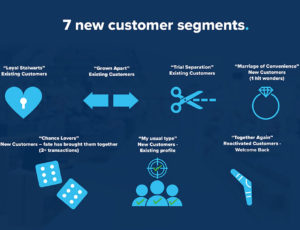
Beth Tait, managing director of Go Inspire, looks at six key factors for childrenswear marketers to address.
Coronavirus affected all of us. But for children, parents and businesses who sell to them, the ‘Corona-coaster’ has been especially bumpy. The opening and closing again of schools. The on-again-off-again nature of holidays abroad and Christmas. The worries about jobs and family incomes.
Each of these feeds into families’ day-to-day decisions about what they buy for their children. Each of them, therefore, also affects the commercial landscape and outlook for childrenswear. In this uncertain new normal, how do childrenswear businesses position themselves for commercial success? And how do marketers plan their promotional spend?
Following on from our earlier study into post-pandemic customer segments, Go Inspire has analysed the six key factors that marketers need to consider as they adapt to our continually shifting circumstances. There are no silver bullets. However, we are confident that marketers who give intelligent and focused attention to these six factors are more likely to win through.
Footfall
Remember the days when there were tried and tested models about footfall to sales conversion? In the new normal, the old percentages on store visitors converting may no longer apply. For example, with more store visitors than previously on a mission to purchase, a 25% drop in footfall doesn’t necessarily translate into a 25% drop in sales. It’s not yet clear whether browsing and purchasing habits have changed permanently. Retailers, therefore, need to monitor and analyse this rigorously.
Shopping mission
If mission visits increase and ‘options browsing’ stays predominantly online, retailers may factor this into their promotional spend. For example, seeking to maintain an enhanced proportion of mission visits. But don’t rush into this – and not just because we don’t yet know the permanence of new footfall and sales conversion behaviours. Childrenswear businesses would be well advised to first look carefully at patterns on, for example, spending on ‘necessities’ versus ‘discretionary’ spend; whether the definitions of these have changed, and whether other new behaviours have emerged. Once again, monitoring and analysis are your allies here.
Seasonality
In a climate of uncertainty about the economy, travel patterns and socialising, seasonality is another area where the old models may have gone out the window. Much of what you knew about sales cycles is in abeyance. Plus, the old mantra of ‘Easter, Summer, Christmas’ is on mute. Successful businesses will capture emerging seasonality patterns and opportunities and quickly adapt to changing customer interests and needs.
Location
The retail cliché ‘Location, location, location’ gained even more truth in 2020. The pandemic has seen ebbs and flows in footfall in high streets and retail parks. The longer-term trend will depend on factors such as ‘work from home’, the economy, attitudes to public transport and the shape of the curve on ecommerce usage. Clearly, businesses cannot suddenly change their location footprint. However, this is another area where astute analysis of your locational performance will help you focus on promotional activities and loyalty incentives.
Stock
Stockholding and supply chain considerations have been an ‘interesting’ challenge in recent months. Retailers have been hesitant about placing orders when consumer demand has been in flux; manufacturers have become more cautious about supply. It’s crazy to promote that which cannot be delivered (or is unlikely to be wanted). Weekly – or even daily – analysis of the axis between demand and ‘supply-ability’ is becoming crucial to attracting customers and fulfilling their demands.
Discounting
Here too, the pre-pandemic models may no longer apply. After all, if the norms on stock, seasonality and consumer behaviours are different, it could be a mistake to follow the ‘standard’ procedures and models on discounting. Being a reliable, trusted supplier with available product and good service may be more important than being lower-cost than your competitors. Ultimately, the watchword remains managing customers by current (and projected) future value. Any discounting strategy needs to focus on high-value, high-loyalty customers. Win them, keep them, and keep them spending with you, and you have the best chance of stepping off the Corona-coaster smiling and in great shape.
Find more insights on post-pandemic marketing strategy from Go Inspire here.








